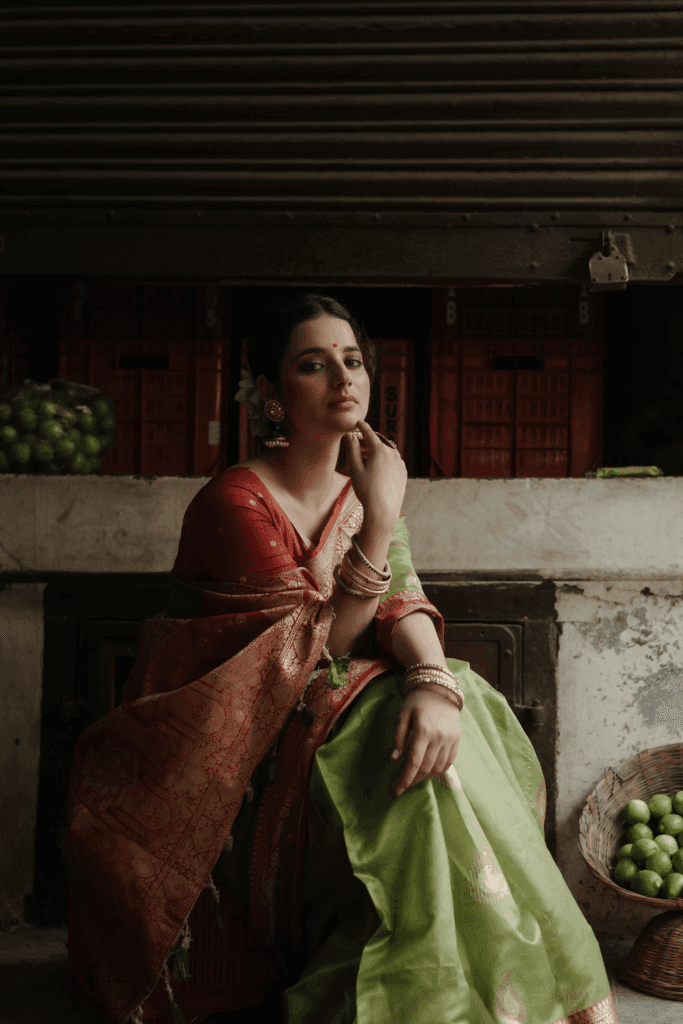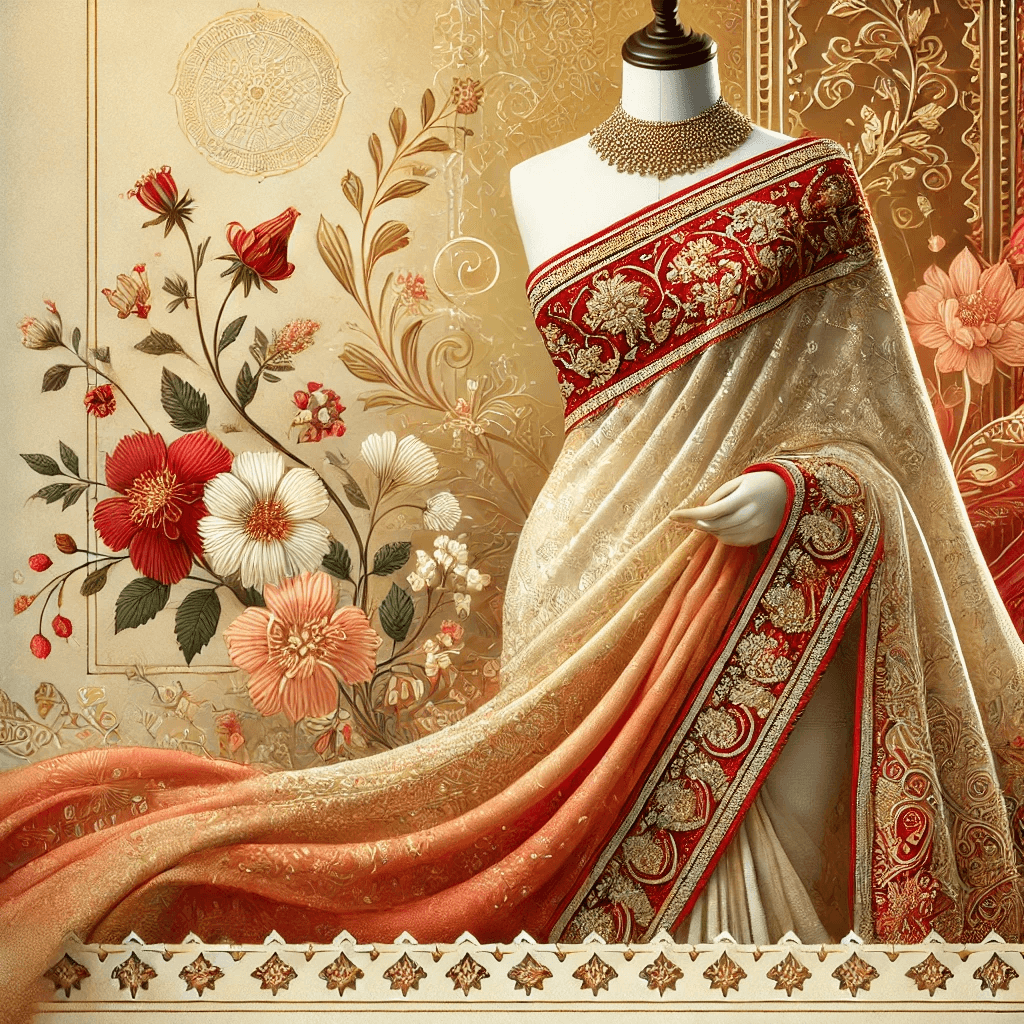- Mukkula Chira Drape – South Andhra's Delight
- What Is the Mukkala Chira Drape ?
- The Origins: A Celebration Of Effortlessness And Comfort
- Key Features of the Mukkala Chira Drape
- How to Wear the Mukkala Chira Drape- A Step-by-Step Guide
- Best Saree Fabrics to Use for Mukkala Chira Drape
- The Aesthetics: Styling the Mukkala Chira Drape
- Mukkula Chira Drape – A Drape Beyond Fashion
- Tips to Keep in Mind
- The Mukkula Chira Drape- Flaunt Your Story
Mukkula Chira Drape – South Andhra’s Delight
India is a land where sarees transform with every region- each exclusive and indistinct to that particular region. Every drape style is a stunning narrative of the region’s cultural heritage. One such understated yet graceful drape is the Mukkala Chira drape, a traditional saree draping style from Southern Andhra Pradesh. This drape, originated in the rural and tribal regions and is very functional as well as elegant. The Mukkala Chira drape beautifully reminds us how six-yards can be an everyday attire. Let’s learn all about this beautiful drape style and how to effortlessly style it.
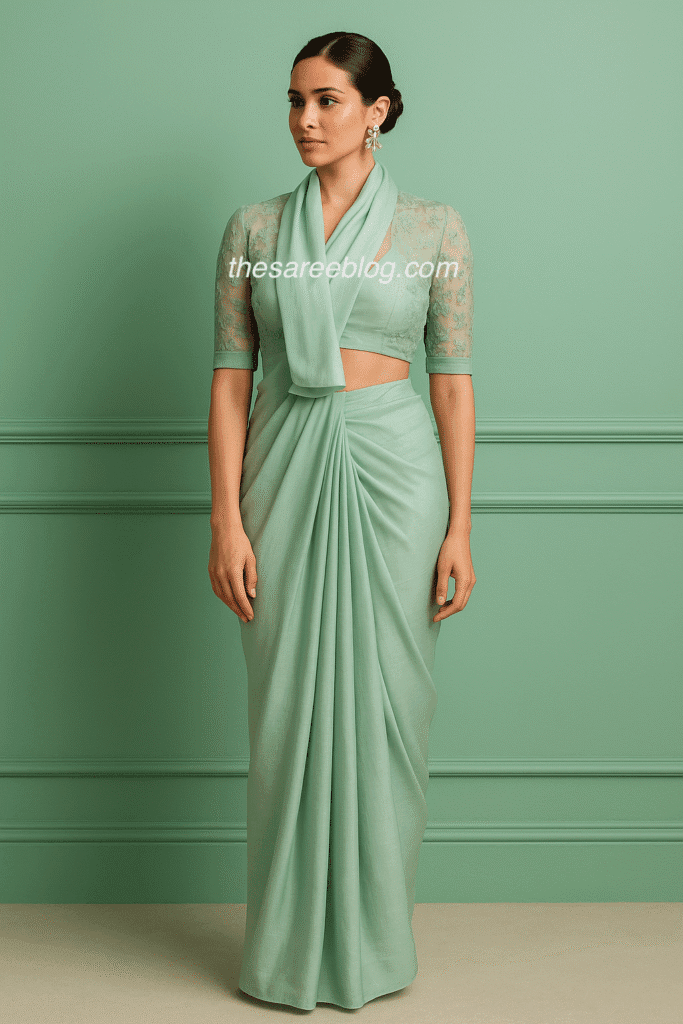
What Is the Mukkala Chira Drape ?
The term “Mukkala Chira” comes from Telugu, where “Chira” means saree and “Mukkalu” refers to ‘folds’ or ‘pleats’. This traditional drape is primarily worn by women in Telangana’s rural and tribal belts, especially in agricultural communities. The Mukkala Chira is known for its practicality—it allows ease of movement, withstands long working hours, and still retains a distinct feminine grace.
Unlike the popular Nivi drape, which uses a petticoat and intricate pleats, the Mukkala Chira drape is free from pins and underskirts. The saree is tucked securely around the waist and pleated into broad folds, with a shorter pallu thrown across the shoulder or tucked in. It offers a minimalist yet powerful silhouette.
The Origins: A Celebration Of Effortlessness And Comfort
The Mukkala Chira emerged from the needs of working-class women—especially farmers, potters, shepherds, and artisans—who needed attire that was cool, breathable, and stayed in place throughout the day. This drape isn’t about showcasing luxury; it’s about adapting tradition to everyday life. And that’s precisely what makes it timeless.
In Telangana’s villages, women would drape this style while sowing seeds, carrying water pots, or walking long distances. Yet, it never looked out of place in a festive gathering either. This effortless shift from field to function to festivity is what sets it apart.
Key Features of the Mukkala Chira Drape
1. Petticoat Optional
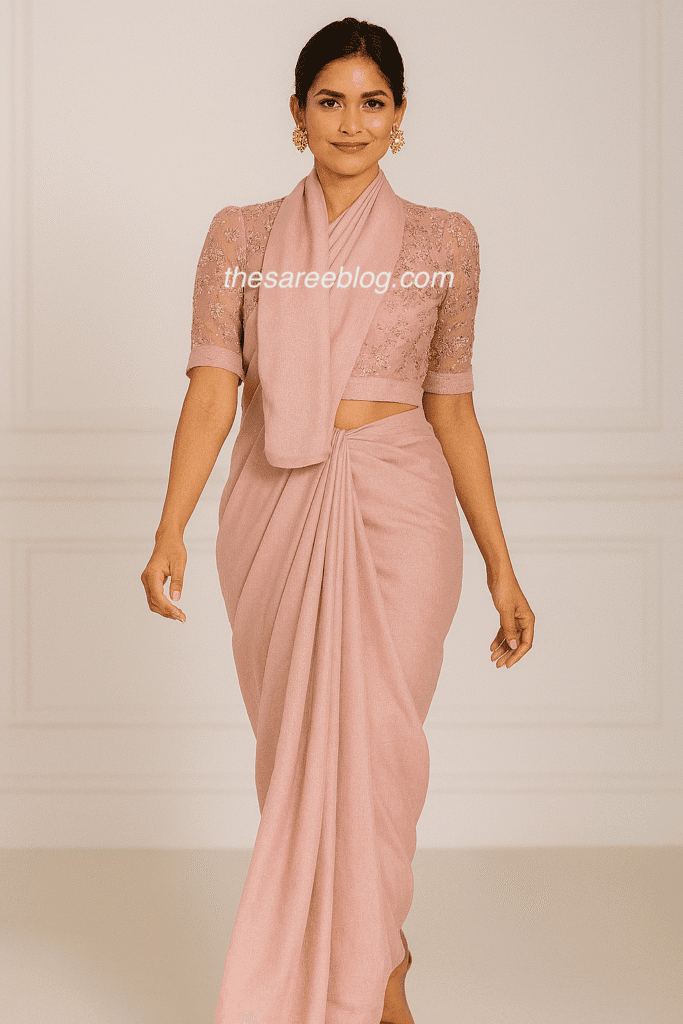
The saree is tied and tucked directly at the waist—usually with a knot. This makes it ideal for the hot, dry climate of Telangana, as it reduces layers and enhances comfort.
2. Broad, Functional Pleats
The pleats in the front are not fine and decorative, but broad and flat, ensuring ease in walking or working.
3. Short Pallu Styling
Unlike the floor-grazing pallus of modern sarees, the Mukkala Chira pallu is short, often thrown across one shoulder like a shawl, or even tucked in. This makes the drape secure and no-fuss.
4. Lightweight Sarees Preferred
This drape works best with cotton, khadi, or handwoven fabrics that are breathable and hold structure.
5. Everyday Elegance
Despite its utilitarian nature, the Mukkala Chira looks chic. It flatters all body types and adds rustic charm and earthy elegance to any look.
How to Wear the Mukkala Chira Drape- A Step-by-Step Guide
Want to try the Mukkala Chira? Here’s how to drape it:
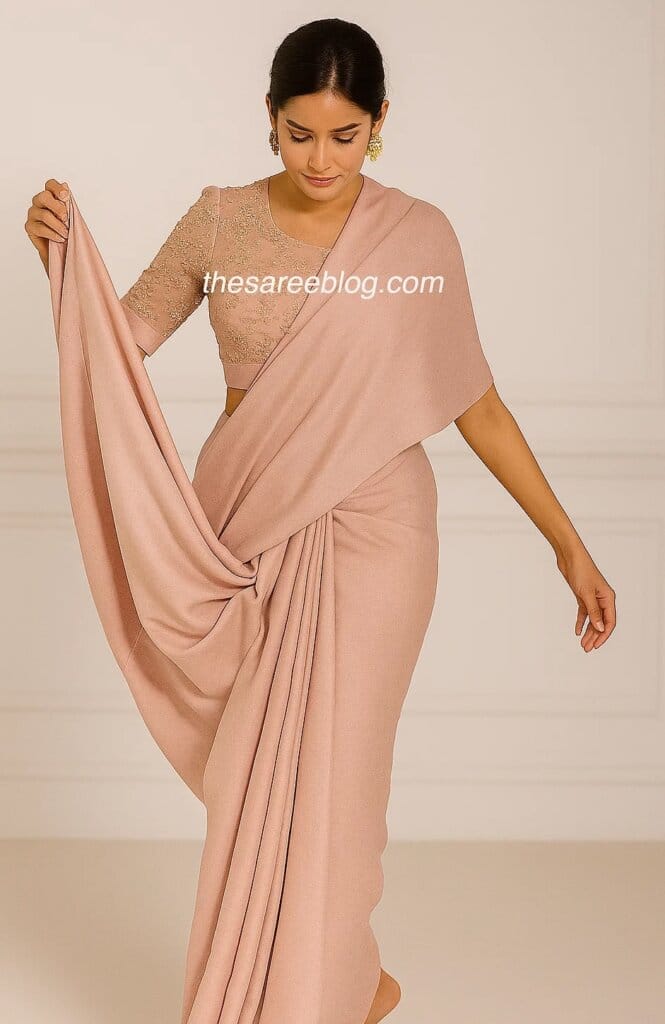
- Start from the back, holding one end of the saree and wrapping it around your waist from right to left.
- Tie a firm knot at the waist after the first round. You can tie it over the saree itself (no petticoat needed).
- Create 2–3 broad pleats in the front. These should be wider and fewer than typical pleats. Tuck them neatly into the waist at the center.
- Bring the pallu across the left shoulder like a shawl or angavastram. It can either hang short in front, be tucked under your arm, or cross over the bust and tuck at the right waist.
- Add an optional cloth belt (traditionally a thread, now a boho kamarbandh or leather belt) to hold the saree in place and define the waistline.
- Finish with jewelry or accessories if desired. This drape is minimal, so keep the look earthy and natural.
Video Credit: Watch this detailed tutorial by Border&Fall.
Best Saree Fabrics to Use for Mukkala Chira Drape
Not all fabrics work for this drape. Since structure is key, opt for fabrics that are lightweight but have body.
Recommended Fabrics:
- Narayanpet Cotton Sarees – Native to Telangana, with checked patterns and contrast borders.
- Khadi Cotton Sarees – Handspun, breathable, and perfect for a rustic look.
- Ilkal Sarees – From bordering Karnataka, known for their firmness and bright pallus.
- Gollabhama Sarees – With embroidered folklore motifs.
- Mangalgiri Cottons – Lightweight and textured.
Avoid:
- Slippery materials like satin or georgette.
- Heavy silks or chiffons that don’t hold the structure well.
The Aesthetics: Styling the Mukkala Chira Drape
While traditionally worn with simple cotton blouses, the Mukkala Chira can be styled for contemporary settings without losing its essence.
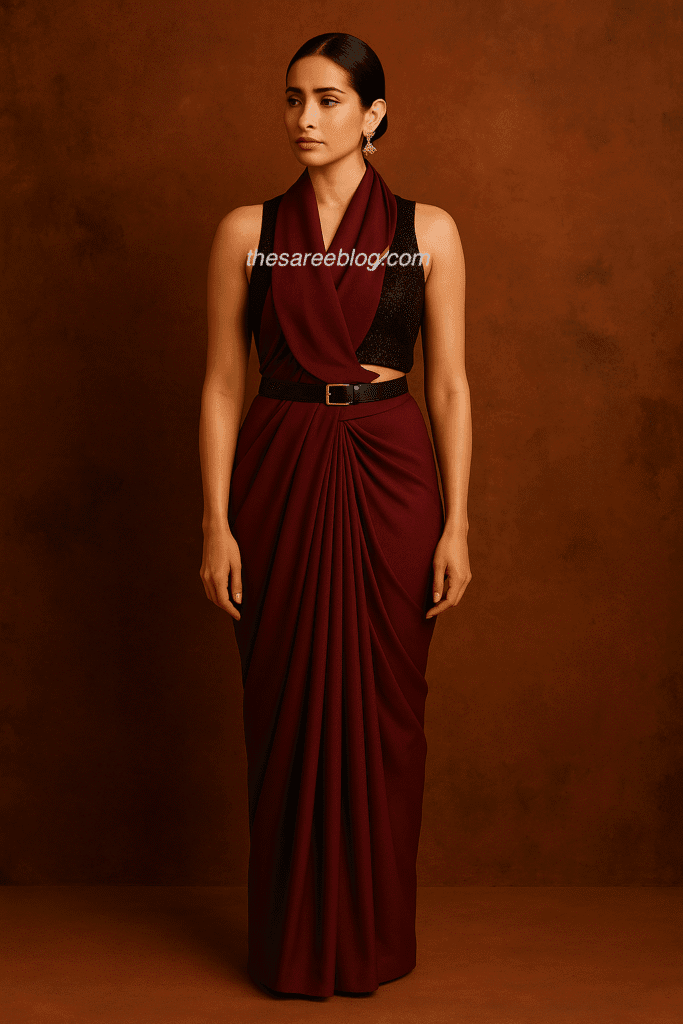
1. Rustic Fusion
Pair with a printed crop top, khadi shirt blouse, or ikat jacket. Add a cloth belt or jute sash.
2. Minimalist Indie Look
Keep accessories minimal. A silver nose ring, oxidized bangles, or tribal choker is enough.
3. Hair and Makeup
Opt for a braided bun, middle-parted braid, or messy bun. Earth-toned makeup with a bindi enhances the traditional vibe.
4. Footwear
Leather kolhapuris, handcrafted sandals, or even barefoot (for authenticity in photoshoots).
5. For Photos or Reels
Use natural backgrounds like old walls, village houses, farm fields, or rustic verandahs. The setting enhances the narrative.
Rising Popularity Of The Mukkula Chira Drape
- Zero-waste fashion: No pins, no extra layers.
- Rooted in culture: Perfect for conscious styling.
- Comfort meets style: Breathable yet flattering.
- Visual storytelling: Ideal for reels, photoshoots, and heritage campaigns.
In recent years, with the revival of handloom fashion and the rise of social media storytelling, traditional drapes like the Mukkala Chira are making a quiet comeback. Instagram influencers, saree bloggers, and sustainable stylists have begun to explore regional drapes to reconnect with culture. Some stylists even use the Mukkala Chira as a bridal mehendi outfit drape, paired with tribal silver or bohemian jewelry.
Mukkula Chira Drape – A Drape Beyond Fashion
Beyond aesthetics, this drape is a symbol of women’s strength and adaptability. In Telangana’s villages, it still lives—worn daily by grandmothers, tribal dancers, and women in fields. It represents a lifestyle of self-reliance, sustainability, and silent elegance.
In folk dances like Lambadi and Bathukamma festivals, the Mukkala Chira can be seen in its most vibrant forms—with mirror-work blouses, stacked bangles, and anklets.
Tips to Keep in Mind
- Use a saree with a strong border—it highlights the folds beautifully.
- Don’t worry about being “perfect”—this drape celebrates imperfection and individuality.
- You can add a contrast blouse or even a shirt-style blouse for a fusion look.
- Practice the knot and tucking to feel secure.
- For styling videos or reels, explain the drape’s history—it adds depth to content.
The Mukkula Chira Drape- Flaunt Your Story
The Mukkula Chira Drape isn’t just a drape style but also a stunning revival of Southern Andhra’s cultural heritage. Exclusive and timeless, this drape is a rcelebration of self expression.
If you love sarees this drape style is a must try. Styling for a fashion shoot, or just a casual outing give your drape this unique style twist. Buckle up, wear your radiant smile, confidence and you’re ready to rock!

